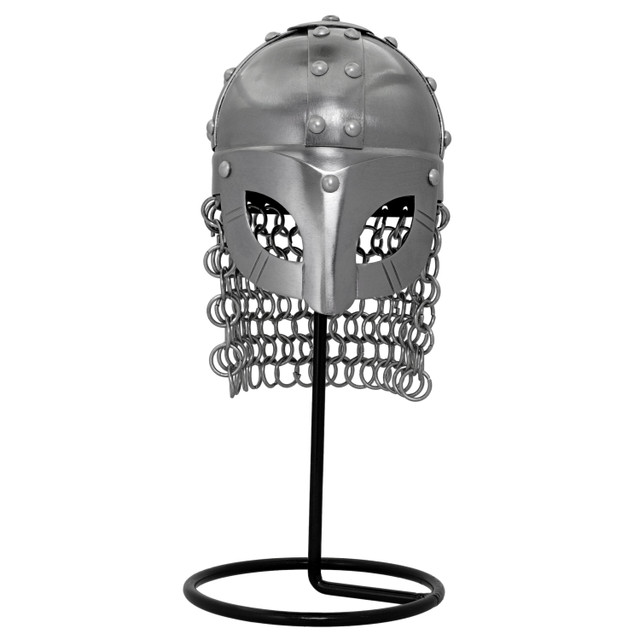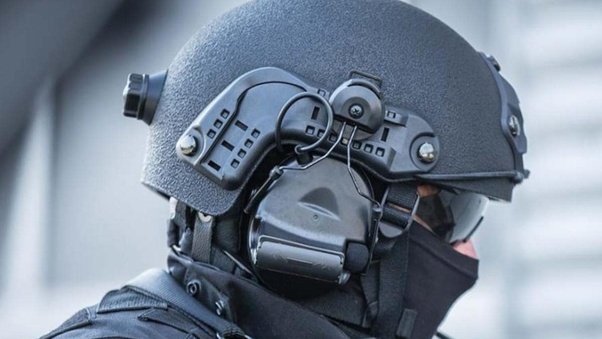Medieval Helmets vs. Modern Helmets: How Far Have We Come?
Posted by SwordsSwords on Aug 13th 2024
Helmets have been an essential part of combat gear for centuries, providing vital protection to warriors and soldiers on the battlefield. From the early days of the Roman Empire to today's advanced military technologies, helmets' design and functionality have evolved significantly. In this blog, we'll explore the differences between medieval helmets and modern helmets, examining how far we've come in terms of materials, design, and protective capabilities.
The Evolution of Helmet Design
Medieval Helmets: Form and Function
Medieval helmets, designed primarily for protection in close combat, came in various shapes and styles, each with its unique purpose. The medieval helmet was not just a piece of armor but a symbol of status and identity, often elaborately decorated to reflect the wearer's rank.
- Roman Helmets
- The Roman helmet, specifically the Roman soldier helmet, was one of the earliest forms of protective headgear. Made of bronze or iron, it featured a distinctive crest and cheek guards. The Roman gladiator helmet was another variant, often designed to intimidate opponents with its dramatic and ornate features. These helmets were as much about psychological warfare as they were about physical protection.
- Viking Helmets
- The Viking helmet is another iconic piece of medieval armor. While the popular image of a real Viking helmet often includes horns, historical evidence suggests that most Viking helmets were simple, conical designs made of iron, offering robust protection during raids and battles.
- Gladiator Helmets
- The gladiator helmet, used in the bloody arenas of Rome, was designed for visibility and intimidation. These helmets often featured masks or visors that mimicked the faces of animals or mythical creatures, adding an element of fear to the already brutal gladiatorial games.

Modern Helmets: Advanced Protection
In contrast, modern helmets are the result of centuries of innovation, driven by advancements in material science, ergonomics, and a deeper understanding of the physics of impacts. Unlike their medieval counterparts, modern helmets are designed with a strong focus on functionality, safety, and comfort.
- Materials and Construction
- Modern helmets are typically made from high-strength synthetic materials such as Kevlar, carbon fiber, and advanced polymers. These materials offer superior protection against ballistic threats and shrapnel, a far cry from the iron and bronze used in medieval helmets. The lightweight nature of these materials also ensures that soldiers can wear helmets for extended periods without discomfort, something that was not possible with the heavier Roman helmets or gladiator helmets of the past.
- Design and Features
- Modern helmets are designed with ergonomics in mind. Features like adjustable straps, padded liners, and ventilation systems ensure a comfortable fit, reducing fatigue during long operations. Additionally, modern helmets often include mounts for night vision goggles, communication systems, and other tactical equipment, reflecting the multifaceted needs of today's soldiers.
- Testing and Standards
- The development of modern helmets is guided by rigorous testing standards. Helmets are subjected to impact tests, ballistic tests, and environmental tests to ensure they provide the maximum level of protection in various combat scenarios. This is a significant departure from medieval times, where helmet design was largely based on trial and error, and the effectiveness of a helmet was often only proven in the heat of battle.

Comparing Protection Capabilities
When comparing the protection capabilities of medieval helmets to modern helmets, it's clear that modern technology has provided substantial improvements. Medieval helmets were primarily designed to protect against blunt force trauma and cuts from swords, axes, and maces. While effective in this regard, they offered little protection against the types of threats encountered in modern warfare, such as bullets and explosive fragments.
Modern helmets, however, are engineered to protect against a wide range of threats, including ballistic impacts, shrapnel, and even blast waves from explosions. The materials used in modern helmets can absorb and dissipate energy far more effectively than the metal used in medieval helmets, providing better protection for the wearer.
Cultural and Symbolic Significance
While modern helmets are designed with practicality and safety in mind, medieval helmets held a deeper cultural and symbolic significance. The design of a helmet could convey a warrior's rank, allegiance, and even personality. For example, the Roman soldier helmet was not just a piece of armor but a symbol of the might of the Roman Empire. Similarly, the Viking helmet represented the fierce and adventurous spirit of the Viking warriors.
Today, the legacy of medieval helmets lives on in historical reenactments, museums, and popular culture. Many people are fascinated by the craftsmanship and history behind these ancient helmets, leading to a growing interest in collecting authentic and replica medieval helmets. For those interested in owning a piece of history, websites like swordsswords.com offer a wide range of medieval helmets for sale, including Roman helmets, Viking helmets, and gladiator helmets.
Conclusion:
The journey from medieval helmets to modern helmets is a testament to human ingenuity and the relentless pursuit of better protection for soldiers. While medieval helmets were effective in their time, modern helmets offer unparalleled protection and comfort, reflecting the advances in technology and materials over the centuries.
However, the appeal of medieval helmets remains strong, not only for their historical significance but also for their aesthetic and symbolic value. Whether you're a history enthusiast, a collector, or someone interested in historical reenactments, exploring the world of medieval helmets offers a fascinating glimpse into the past.
If you're looking to add a real Viking helmet, Roman gladiator helmet, or any other type of medieval helmet to your collection, consider browsing the selection at swordsswords.com. With a wide range of authentic and replica helmets available, you're sure to find a piece that resonates with your passion for history.

